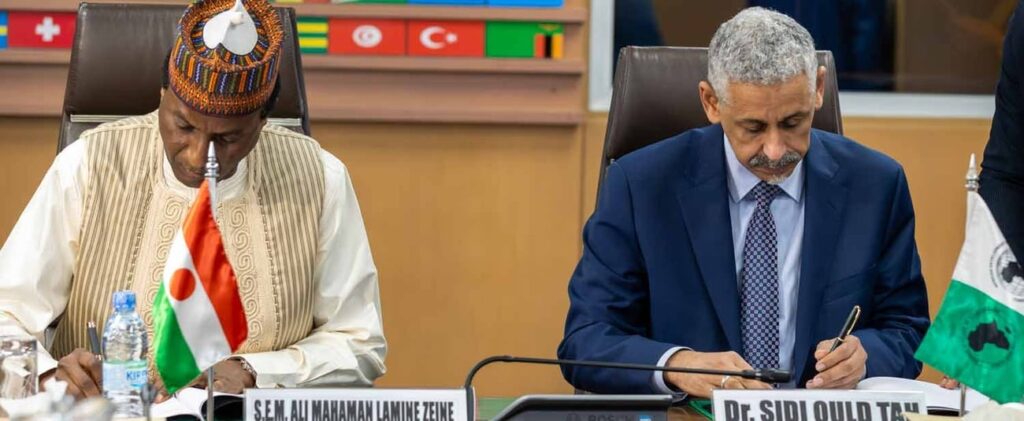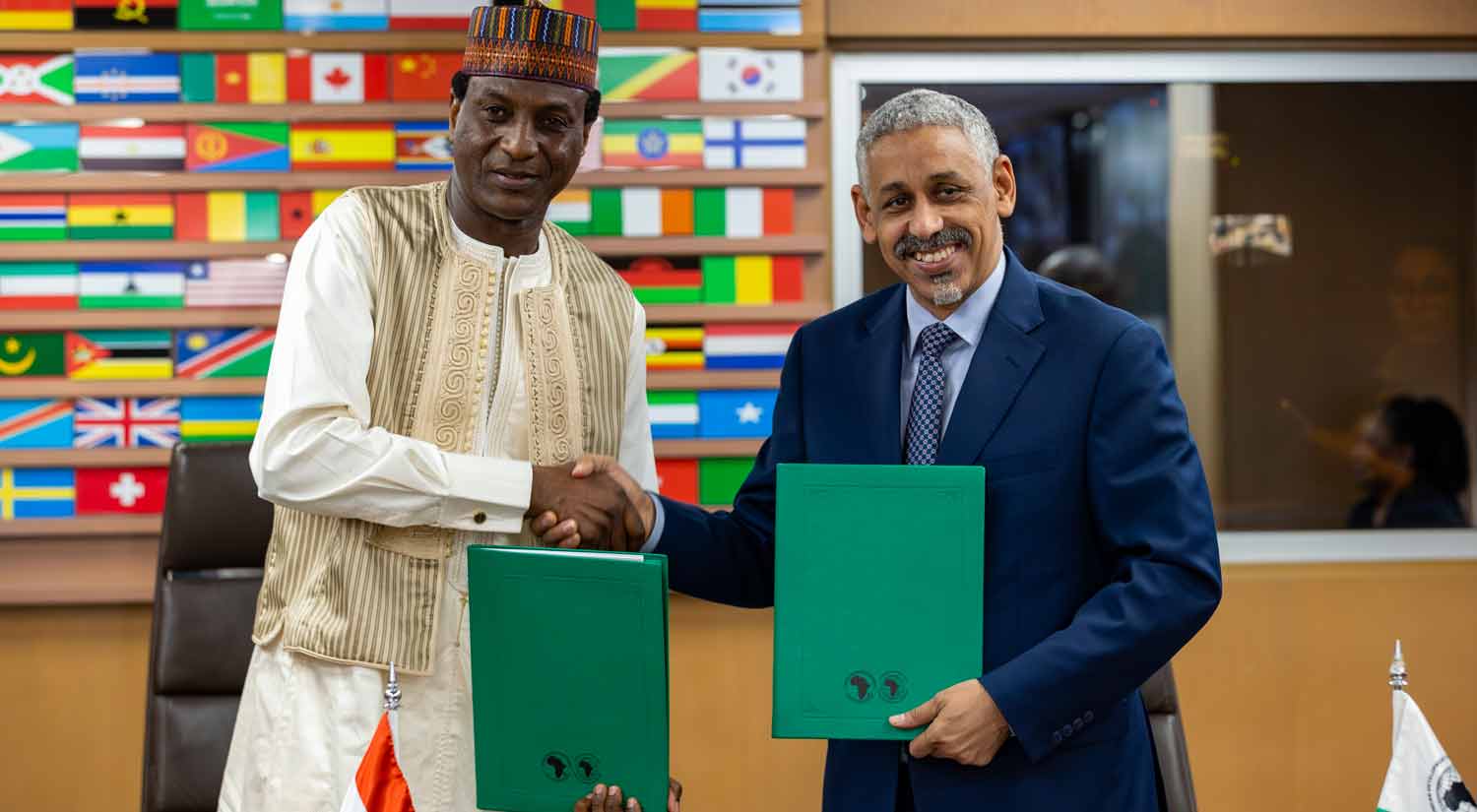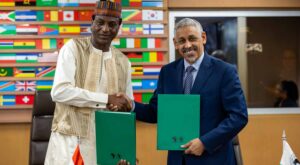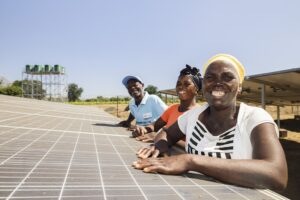The African Development Bank Group has formalized a $144.7 million financing agreement with Niger to accelerate energy access expansion and private sector development through the Energy Sector Governance and Competitiveness Support Programme (PAGSEC). The budgetary support package, provided through the African Development Fund’s concessional financing window, aims to unlock Niger’s substantial renewable energy potential while strengthening the country’s economic resilience.
Signed in Abidjan by AfDB President Sidi Ould Tah and Niger’s Prime Minister Ali Mahamane Lamine Zeine, the agreement represents one of the Bank’s most comprehensive country-level interventions in West Africa’s Sahel region, combining energy infrastructure development with governance reforms and private sector enablement.
Ambitious Energy Access Expansion
The programme sets aggressive targets for electricity penetration, aiming to increase national access from 22.5% to 30% by 2026. This expansion will be driven primarily through renewable energy deployment, with plans to develop 240 megawatts of solar capacity by 2030, including an initial 50 MW to be operational by December 2026.
These targets position Niger among the fastest-growing solar markets in francophone West Africa, creating substantial opportunities for independent power producers, engineering procurement and construction contractors, and equipment suppliers. The aggressive timeline for the first 50 MW suggests procurement processes for initial projects may commence within months.
“The agreement is part of our strong cooperation with the African Development Bank Group,” said Prime Minister Zeine, who also serves as Niger’s Minister of Economy and Finance and the country’s Governor to the Bank Group. “Our Bank’s support came at an important time, and the process has now led to the establishment of this programme.”
Creating Bankable Investment Frameworks
A critical component of PAGSEC involves establishing high-level coordination mechanisms and updating national energy policies to create favorable conditions for private sector participation. Particular emphasis will be placed on mini-grid development frameworks essential for rural electrification in Niger’s dispersed population centers.
The programme will strengthen public-private partnership dialogue structures and support the adoption of comprehensive industrial and trade policies designed to bolster private sector competitiveness. These governance improvements are crucial for de-risking renewable energy investments and attracting commercial capital to complement development finance.
For investors evaluating opportunities in Niger’s emerging solar sector, the policy reforms embedded in PAGSEC address longstanding challenges around regulatory clarity, offtake security, and contract enforceability that have historically constrained project bankability in the Sahel region.

Manufacturing Sector Growth Trajectory
Beyond power generation, the programme targets significant expansion of Niger’s manufacturing base, aiming to increase the sector’s contribution to GDP from 2.5% to 3.8%. This industrial development strategy recognizes that reliable electricity supply is foundational to manufacturing competitiveness and export-oriented production.
The manufacturing expansion creates derivative opportunities for energy infrastructure investors, particularly in captive power solutions, industrial rooftop solar installations, and energy efficiency technologies. As Niger develops processing capacity for its agricultural commodities and mineral resources, demand for stable power supply will accelerate.
Fiscal Framework and Revenue Mobilization
PAGSEC incorporates substantial public financial management reforms aimed at strengthening tax revenue mobilization and expenditure control systems. These fiscal improvements are designed to enhance government capacity to honor payment obligations under power purchase agreements and other infrastructure contracts.
The programme will support clearance of domestic arrears that have accumulated across government departments, addressing a persistent challenge that has complicated supplier and contractor relationships in Niger’s public sector. Improved payment discipline and fiscal predictability reduce working capital risks for energy sector participants.
“I can assure you that the African Development Bank Group will remain, as it has always been, a strong supporter of all our regional member states in their pursuit of harmonious development and shared prosperity,” said Dr Ould Tah at the signing ceremony.
Social Inclusion and Displacement Response
With more than 507,000 internally displaced persons due to ongoing security challenges in the Sahel, PAGSEC integrates a comprehensive social and economic inclusion programme targeting vulnerable populations. Specialized support provisions address the needs of displaced communities, women, and youth.
This social inclusion framework extends to energy access initiatives, with mini-grid and off-grid solutions prioritized for underserved communities and displacement-affected areas. Development finance institutions and impact investors focused on energy access will find aligned policy support for projects serving vulnerable populations.
The emphasis on youth employment within the programme creates opportunities for workforce development partnerships and technical training initiatives linked to renewable energy deployment.
Strategic Geopolitical Context
Niger occupies a pivotal position in West Africa’s Sahel region, with substantial uranium reserves, agricultural potential, and a strategic location linking North and sub-Saharan Africa. However, the country has faced political transitions and security challenges that have complicated its development trajectory.
The AfDB’s substantial commitment signals confidence in Niger’s reform momentum and provides important third-party validation for investors evaluating country risk. The programme’s multi-year timeline and comprehensive scope suggest sustained international development community engagement despite regional security complexities.
For energy investors, Niger’s current low electrification rate represents both challenge and opportunity. The country’s vast solar irradiation levels, combined with low existing generation capacity, create conditions for transformative growth in renewable energy deployment over the coming decade.
Investment Implications and Market Entry
The PAGSEC framework establishes clear policy direction for Niger’s energy sector through 2030, providing investors with regulatory visibility essential for long-term capital allocation decisions. Key investment themes emerging from the programme include:
Near-term opportunities: The 50 MW solar target by December 2026 will likely trigger competitive procurement processes for utility-scale projects and fast-track mini-grid development in high-priority areas.
Mini-grid and distributed generation: Policy reforms specifically enabling private sector mini-grid participation address a critical market segment, with rural electrification priorities creating a pipeline of smaller-scale projects suitable for specialist developers and energy access investors.
Manufacturing and industrial power: The targeted expansion of manufacturing to 3.8% of GDP will drive demand for reliable industrial power solutions, creating opportunities for behind-the-meter solar, hybrid systems, and power quality infrastructure.
Technical assistance and capacity building: The governance and institutional strengthening components of PAGSEC may create consulting and advisory opportunities for firms with Sahel region experience in regulatory design, utility management, and energy sector reform.
Risk Considerations
While PAGSEC creates an improved enabling environment for energy investment, Niger continues to face significant challenges that require careful risk assessment. Security conditions in certain regions, currency convertibility constraints, and limited domestic capital markets present ongoing considerations for project structuring and financing.
The programme’s emphasis on fiscal reform and arrears clearance suggests acknowledged challenges in government payment capacity that investors should incorporate into credit analysis and contract structuring. Careful attention to payment security mechanisms, including escrow arrangements and letters of credit, will remain important for project bankability.
Regional Significance
Niger’s energy sector transformation under PAGSEC aligns with broader regional integration efforts in West Africa’s power sector. As the Economic Community of West African States advances cross-border electricity trading and regional generation capacity development, Niger’s solar buildout positions the country as a potential net power exporter over the medium term.
The AfDB’s support for Niger follows similar programmes in neighboring countries, reflecting a coordinated approach to addressing energy deficits across the Sahel. This regional perspective creates opportunities for investors and developers to build presence and execute multiple projects across francophone West Africa.
Outlook for 2025-2026
With the agreement now formalized, implementation of Phase 1 activities will accelerate through 2025. Investors and developers should monitor procurement announcements from Niger’s energy authorities and track progress on the regulatory reforms embedded in PAGSEC’s governance component.
The December 2026 target for the initial 50 MW of solar capacity creates urgency for project development cycles to commence rapidly. Experienced Sahel region developers with existing relationships in Niger are well-positioned to capture early-mover advantages as procurement frameworks are established.
For institutional investors seeking diversified exposure to Africa’s energy transition, Niger represents a frontier opportunity with substantial growth potential, backing from multilateral development banks, and policy momentum. The successful execution of PAGSEC will serve as an important test case for scaling renewable energy deployment in the Sahel’s challenging operating environment.





